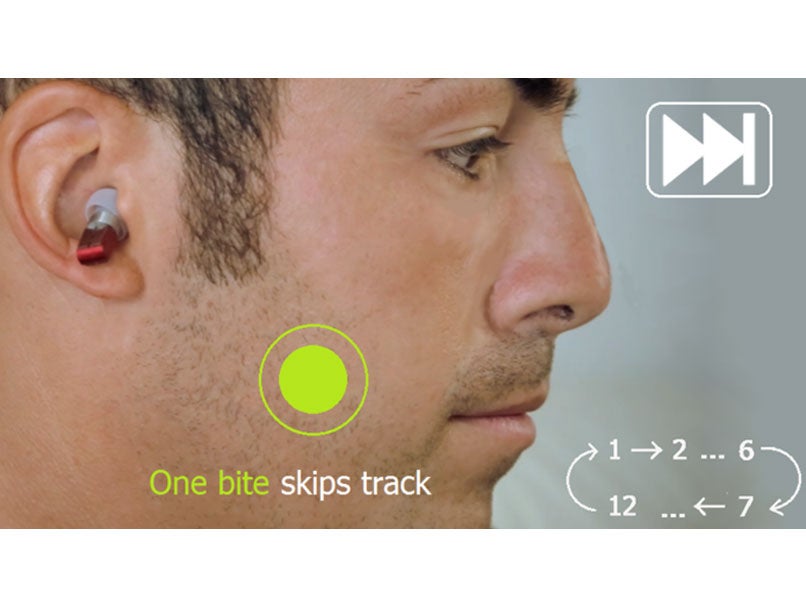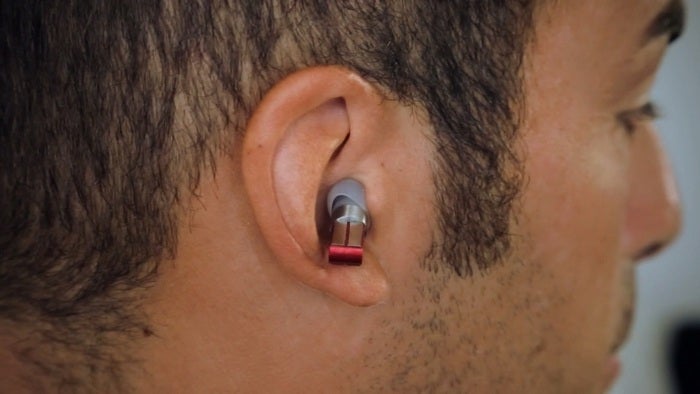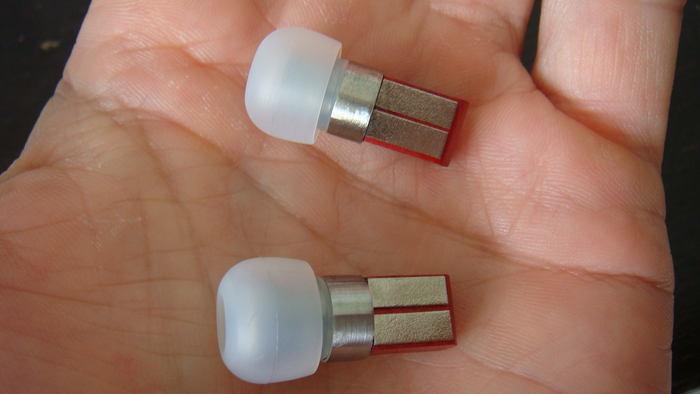Split: a hands-free music player that you control by biting
Built-in magnets keep the pair of earphones together and are also used to charge the battery

Your support helps us to tell the story
From reproductive rights to climate change to Big Tech, The Independent is on the ground when the story is developing. Whether it's investigating the financials of Elon Musk's pro-Trump PAC or producing our latest documentary, 'The A Word', which shines a light on the American women fighting for reproductive rights, we know how important it is to parse out the facts from the messaging.
At such a critical moment in US history, we need reporters on the ground. Your donation allows us to keep sending journalists to speak to both sides of the story.
The Independent is trusted by Americans across the entire political spectrum. And unlike many other quality news outlets, we choose not to lock Americans out of our reporting and analysis with paywalls. We believe quality journalism should be available to everyone, paid for by those who can afford it.
Your support makes all the difference.A fledgling tech company from the US is attempting to fix the problem of tangled earphone cables once and for all with Split: a stand-alone MP3 player that is just a pair of earphones, without buttons or cables of any sort.
In lieu of any conventional interface, Split is operated by biting, with the earphones sensing the vibrations of even a gentle bite. One bite skips a track, whilst two bites cycle the volume between four options: mute, low, medium and high.
“The teeth bite creates a vibration pulse that travels along the jawbone. The vibration has a distinctive signature which is detected by a custom-built 3-axis accelerometer,” say the Split’s makers.
To avoid accidently skipping your favourite song when you tuck into your lunch, the bite-controls can also be locked by tapping the side of the earphones.
“You are able to control your player without stopping what you’re doing. Keep your gloves on in the cold; walk, bike, jump, exercise without cables, dongles or external attachments. All you need is right there in your ears.”
The Split’s stripped-down approach to interfaces also applies to connectors: there are no USB ports, mini or otherwise, and instead a pair of magnets handle most of the necessary functions.

The magnets keep the two buds in one place, sticking them together when not in use. Pulling them apart turns the device on and the magnets are also used to charge it via a special USB cable.
The two earphones communicate with one another using short bursts of near-field signals (these are electromagnetic transmissions that emit around 1000 times less radiation than Bluetooth) but actually operate independently, with the music kept in sync with “high precision clocks”.
The three-person team behind the Split are currently looking for funding for their project via Kickstarter (see the video below) but are promising that the production version will store up to 24 songs and offer four hours of battery life.

Join our commenting forum
Join thought-provoking conversations, follow other Independent readers and see their replies
Comments